|
|
|
|
|
|
|
Achi-Kochi Japan
Showing many places to visit and foods to eat in Japan
|
|
|
|
|
|
|
|
|
|
|
|
|
Japan
> Shikoku region
> Tokushima City
|
|
|
|
|
|
|
Tokushima City
Tokushima Pref., Shikoku ( Achi-Kochi Japan )
|
|
|
|
|
|
|
|
|
|
|
|
|
( "Achi-Kochi" in Japanese means "Here and there" in English. )
Tokushima City

Tokushima City ( above ), located in the east of Shikoku Region, is the capital city of Tokushima Prefecture. The city, whose population is over 250,000, used to be the capital city of Awa Feudal Domain during Tokugawa Period ( ==> A History of Japan vol.2 Samurai Age ).
|
|
Bizan Mountain
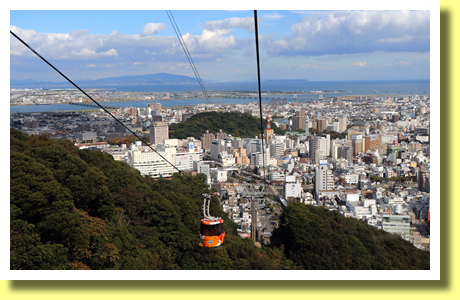
There is a Ropeway Station on the fifth floor of Awa Odori Kaikan. The ropeway takes tourists to the top of Bizan Mountain ( 290 meter-high ) where people could overlook Tokushima City ( above ).
The above photo shows a hill in the city, on and around which a castle was built by a feudal lord, Iemasa Hachisuka after Awa Province ( now Tokushima Prefecture ) was given to him as a feudal domain in A.D.1585. Also he built a castle town, which is now Tokushima City.
When the castle was completed in A.D.1587, the lord made people celebrate. One of some theories says that the celebration was the origin of Awa Odori ( Awa Dance ), which attracts many tourists. Also Awa Ningyo Joruri is popular among tourists as well as Tokushima Ramen and Awa-odori chicken dishes are.
|
|
Awa Odori ( Awa Dance )
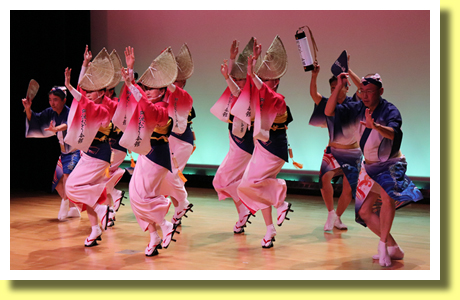
Awa Odori ( Awa Dance ) Festival is held through 12th - 15th August every year in Tokushima City where so many people visit to see the festival. However, even not on the above-mentioned four days of August, tourists could enjoy watching Awa Dance ( above ) in Awa Odori Kaikan almost everyday all year round.
So tourists, visiting Japan not in summer but in spring to see Sakura ( cherry blossoms ), in autumn to see Momiji ( red leaves ) or in winter to see snow, could enjoy watching the dance performances in Awa Odori Kaikan in Tokushima City.
|
|
Awa Odori Kaikan

There is the dance stage on the second floor of Awa Odori Kaikan, where the dance ( above ) is performed, not on the streets as during the period of the festival in summer. The dance performances are so popular that many tourists visit Awa Odori Kaikan.
|
|
Performances

Awa Dance performances ( above ) are held several times a day on the second floor of Awa Odori Kaikan. There would be opportunities for tourists to experience Awa Odori by themselves on the stage. Also there is a museum which exhibits many related to Awa Odori on the third floor as well as a sightseeing information centre and souvenir shop on the first floor.
|
|
Awa Jurobe Yashiki
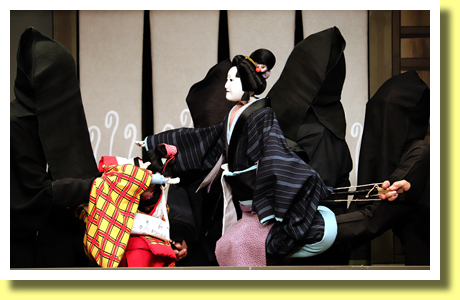
Also many tourists visit Awa Jurobe Yashiki in Tokushima City to watch Ningyo Joruri ( above ), which is a Japanese traditional puppet theatre and is a designated National Important Intangible Folk-Culture Asset of Japan.
|
|
Ningyo Joruri
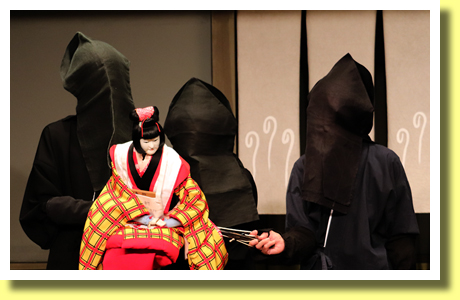
In Ningyo Joruri, each Ningyo ( puppet ) is manipulated by three puppeteers in black robes ( above ). Ningyo Joruri, born in Osaka in the 17th century, is performed to a story told by a Tayu ( narrator ) accompanied by a musician playing a shamisen ( three-stringed Japanese musical instrument ).
|
|
Exhibits
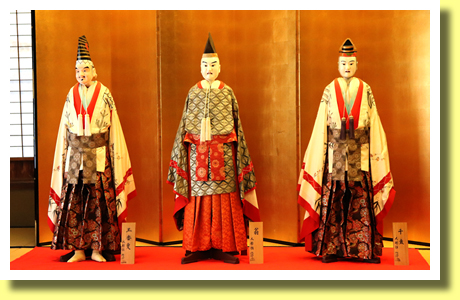
Tourists could see many related to Ningyo Joruri exhibited in Awa Jurobe Yashiki as well as a puppet theatre performed once or twice almost everyday all year round. Awa Jurobe Yashiki is one of the best places to enjoy and know Ningyo Joruri.
|
|
Awa Deko Ningyo Kaikan
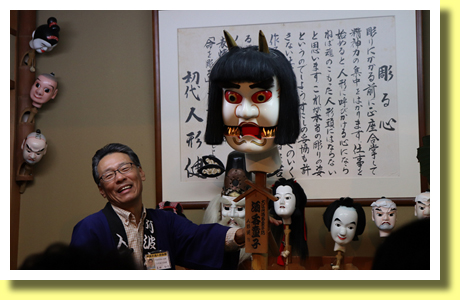
There is a museum, Awa Deko Ningyo Kaikan, near Awa Jurobe Yashiki. "Deko" means "Ningyo" ( puppet ) used in Ningyo Joruri. Tourists could see how to manipulate Deko heads ( above ) as well as puppet-making.
Each puppet is manipulated by three puppeteers. The main puppeteer manipulate the head and the right hand of the puppet, while the left puppeteer does the left hand of the puppet and the right puppeteer does the legs and feet of the puppet.
|
|
Tokushima Ramen
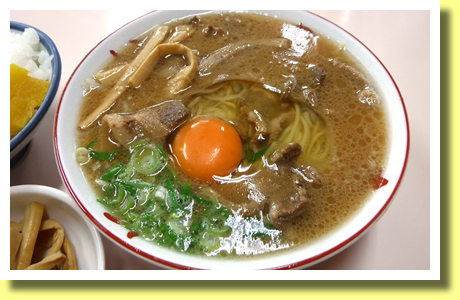
Tokushima Ramen is one of the most famous and popular ramen in Japan. There in Tokushima City are more than 100 ramen restaurants, among which Inotani is the most famous Ramen restaurant in Tokushima. The above photo shows Tokushima Ramen served in Inotani.
Many of Tokushima Ramen restaurants , including Inotani, serve flour noodles in Tonkotsu Shoyu soup, which is Tonkotsu ( pork bone ) broth seasoned with Shoyu ( soy sauce ). Most of Tokushima Ramen is topped with sliced pork, a raw egg and green onions.
|
|
Awa-odori chicken
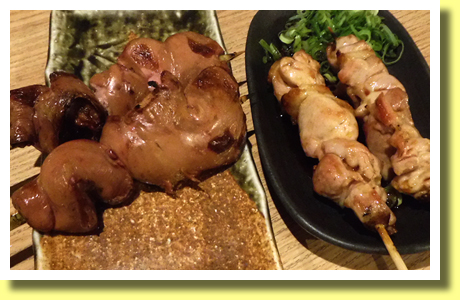
Awa-odori chicken is a variety of chicken bred in Tokushima Prefecture. Its low fat and rich chewy meat is very popular. Especially Awa-odori Yakitori ( broiled chicken on skewers - above ) are so nice. Also their meats are very nice in hot-pots. Awa-odori chicken is one of local specialty dishes.
|
|
Fish Katsu
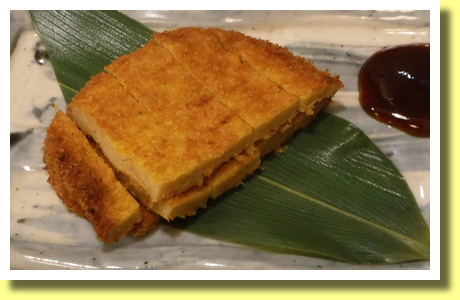
People in Tokushima Prefecture love Fish Katsu ( above ), which is a deep-fried breaded cutlet of ground fish seasoned with curry powder. "Katsu" means "Fish Katsu" in the east of Tokushima Prefecture while "Katsu" means "Ton-Katsu" ( pork cutlet ) in most of Japan.
|
Copyright (c) 2021 Achi-Kochi Zanmai Co., Ltd.
|